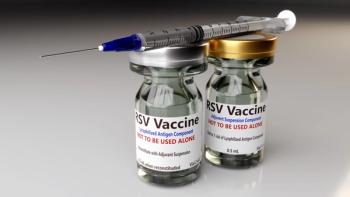
- December 2020
- Volume 88
- Issue 12
Considerations in the Treatment of Insomnia
This article was sponsored by Eisai Inc.
DAYVIGO (lemborexant) may help patients fall asleep faster and stay asleep longer.
INSOMNIA OVERVIEW AND DIAGNOSIS
Insomnia disorder, which is characterized by difficulty falling asleep, staying asleep, or both, is one of the most common sleep-wake disorders, affecting approximately 6% to 10% of adults.1 According to DSM-5 and ICSD-3 diagnostic criteria, a diagnosis of insomnia disorder requires the following1,2:
- Sleep difficulty and associated consequence occur for at least a 3-month duration with 3 times per week as the minimum frequency
- Distress or impairment that is caused by the insomnia
- The problem occurs despite ample opportunity to sleep
- The difficulty cannot be better explained by other physical, mental, or sleep-wake disorders
- The problem cannot be attributed to substance use or medication
DAYVIGO (LEMBOREXANT)
DAYVIGO is an orally administered orexin receptor antagonist indicated for the treatment of adult patients with insomnia, characterized by difficulties with sleep onset and/or sleep maintenance.3 DAYVIGO is contraindicated in patients with narcolepsy. DAYVIGO is thought to treat insomnia by blocking orexin signals in the brain that are believed to play a role in wakefulness, suppressing the wake drive.3,4 This mechanism is thought to play a role in insomnia by blocking wake-promoting neuropeptides orexin A and orexin B to receptors OX1R and OX2R to suppress the wake drive.3 Additional Selected Safety will be discussed throughout.
EFFICACY
The clinical efficacy and safety of DAYVIGO was evaluated in the phase III 6-Month (Study 1) and 1-Month (Study 2) trial with a total study population of nearly 2000 adult patients.3 Study 1 enrolled patients 18 years of age and older. Study 2 enrolled adult female patients 55 years of age and older and male patients 65 years of age and older. Both trials enrolled patients who met DSM-5 criteria for insomnia disorder.3 The trials included patients with diverse medical histories or who had medical conditions that were concurrently treated or controlled for, including major depressive disorder, migraines, menopause, generalized anxiety disorder, hypertension, and diabetes.4,5 The trials excluded patients with certain concurrent medical conditions, such as narcolepsy, reported history of complex sleep-related behaviors, sleep-related breathing disorder, circadian rhythm sleep disorder, periodic limb movement disorder, restless leg syndrome, and moderate to severe symptoms of depression or anxiety.4,5
Sleep onset and maintenance symptoms were evaluated using sleep labs and patient diaries.4 As shown in the
FIGURE 1
, treatment with DAYVIGO 5 mg and 10 mg was demonstrated to be effective at helping patients with insomnia fall asleep faster than those taking placebo.3,6 DAYVIGO 5 mg and 10 mg was also shown to help patients stay asleep longer versus placebo through a reduction of wake after sleep onset (
FIGURE 2
).3,6
SAFETY
The most common adverse reaction (reported in 5 % of patients treated with DAYVIGO and at least twice the rate of placebo) with DAYVIGO was somnolence (10 % for DAYVIGO 10 mg, 7 % for DAYVIGO 5 mg, 1 % for placebo). Adverse reactions reported in 2% or more of DAYVIGO-treated patients and at a greater frequency than placebo-treated patients in the first 30 days of Study 1 and Study 2 trials included somnolence or fatigue (6.9% and 9.6% in the 5 mg and 10 mg cohorts, respectively), headache (5.9% and 4.5% in the 5 mg and 10 mg cohorts, respectively), and nightmares or abnormal dreams (0.9% and 2.2% in the 5 mg and 10 mg cohorts, respectively).3
The frequencies of discontinuation due to adverse reactions in Study 1 (the first 30 days) and Study 2 were 2.6% and 1.4% for patients treated with 5 mg and 10 mg DAYVIGO, respectively, compared to 1.5% for patients in the placebo group. Discontinuation rates due to adverse reactions for the 6-month placebo-controlled period of Study 1 were 8.3% and 4.1% for patients treated with DAYVIGO 10 mg and 5 mg, respectively, compared to 3.8% for patients in the placebo group.3
At either dose of DAYVIGO, there was no evidence of withdrawal effects upon drug discontinuation through 1 year of use, suggesting no physical dependence.3 DAYVIGO is a Schedule IV-controlled substance. Because individuals with a history of abuse or addiction to alcohol or other drugs may be at increased risk for abuse and addiction to DAYVIGO, follow such patients carefully. Additional special safety assessments from two reandomized studies comparing 5 mg and 10 mg of DAVIGO versus placebo and active-comparator for next-day safety in healthy subjects and patients with insomnia disorder who were 55 years of age or older, and for middle-of-the-night safety in healthy female subjects 55 years of age and older and male subjects 65 years of age and older, showed no meaningful differences between DAYVIGO and placebo on next-day postural stability or next-day memory.3
Nevertheless, patients using the 5 mg or 10 mg dose should be cautioned about the potential for middle-of-the-night postural instability, as well as middle-of-the-night attention and memory impairment.3
Additionally, results from a randomized, double-blind, placebo- and active-controlled, 4-period crossover study in healthy volunteers showed that DAYVIGO at doses of 5 mg and 10 mg did not cause statistically significant impairment in next-morning driving approximately 9 hours after dosing. Driving ability was impaired in some patients taking 10 mg DAYVIGO, therefore patients using the 10 mg dose should be cautioned about the potential for next-morning driving impairment due to individual variation in sensitivity to DAYVIGO.3
SELECTED SAFETY INFORMATIONWARNINGS AND PRECAUTIONS
• Central Nervous System (CNS) Depressant Effects and Daytime Impairment:
DAYVIGO can impair daytime wakefulness. CNS depressant effects may persist in some patients up to several days after discontinuing DAYVIGO. Prescribers should advise patients about the potential for next-day somnolence.
Driving ability was impaired in some subjects taking DAYVIGO 10 mg. Risk of daytime impairment is increased if DAYVIGO is taken with less than a full night of sleep remaining or at a higher than recommended dose. If taken in these circumstances, patients should not drive or engage in activities requiring mental alertness.
Use with other classes of CNS depressants (e.g., benzodiazepines, opioids, tricyclic antidepressants, alcohol) increases the risk of CNS depression, which can cause daytime impairment. Dosage adjustments of DAYVIGO and concomitant CNS depressants may be necessary when administered together. Use of DAYVIGO with other insomnia drugs is not recommended. Patients should be advised not to consume alcohol in combination with DAYVIGO.
Because DAYVIGO can cause drowsiness, patients, particularly the elderly, are at a higher risk of falls.
Additional Selected Safety will be discussed throughout.
THE ROLE OF THE PHARMACIST
Pharmacists play an important role in the healthcare journey of the patient. For patients prescribed DAYVIGO, pharmacists can provide key information about the dosing and administration, as well as offer information regarding resources and support for patients with insomnia.
ADMINISTRATION AND DOSING
Additional Selected Safety will be discussed throughout. DAYVIGO is taken once nightly right before bed and should be taken to ensure at least 7 hours of sleep remaining prior to waking.3 The recommended starting dose of DAYVIGO is 5 mg, however may be increased to 10 mg based on patient need and tolerability.3 Exercise caution when using doses higher than 5 mg in patients 65 years of age and older. For patients with moderate hepatic impairment, the maximum recommended dose is 5 mg once per night. DAYVIGO is not recommended for patients with severe hepatic impairment. Patients with mild hepatic impairment may experience an increased risk of somnolence.3 Patients with severe renal impairment may experience an increased risk of somnolence. Exercise caution when using 10 mg in patients 65 years of age or older. The maximum recommended dose per night of DAYVIGO is 5 mg when co-administered with weak CYP3A inhibitors and concomitant use with strong or moderate CYP3A inhibitors or inducers should be avoided.3
RESOURCES AND SUPPORT FOR PATIENTS
Affordability and access can be important considerations during counseling sessions with patients. With the DAYVIGO Instant Savings Card, eligible commercially insured patients may pay as little as $30 on out-of-pocket expenses.* The DAYVIGO Patient Assistance Program and 10-day Free Trial offer provides medication at little to no cost to those who qualify.
Pharmacists can encourage patients taking DAYVIGO to record their sleep challenges with the DAYVIGO sleep tracker. DAYVIGO Together is a support program for patients with insomnia, living with the challenges that come with poor sleep. Patients can sign up to get access to tools and educational resources to help them navigate their personal insomnia challenges by calling 1-866-4DAYVIGO.
For more information about DAYVIGO, visit www.dayvigo.com.
* DAYVIGO Instant Savings Card Terms and Conditions: Good toward the purchase of DAYVIGO prescriptions. Most commercially insured patients will pay as little as $30 of out-of-pocket expenses. Instant Savings Card benefit is limited to twelve uses annually. Patients could have additional financial responsibility for any amounts over Eisai’s maximum liability. No substitutions permitted. Save the Instant Savings Card to reuse with each prescription. Not available to patients enrolled in federal or state healthcare programs, including Medicare, Medicaid, Medigap, VA, DoD, or TRICARE. Patients must have commercial insurance. Cash paying patients are excluded. Not valid for DAYVIGO prescription reimbursed in full by any thirdparty payer. May not be combined with any other discount or offer. Federal law prohibits the selling, purchasing, trading, or counterfeiting of this card. Void outside the USA and where prohibited by law. Eisai Inc. reserves the right to rescind, revoke, or amend this offer without notice at any time. You must be 18 years or older to use the card. Patients and pharmacies are responsible for disclosing to insurance carriers the redemption and value of the Instant Savings Card and complying with any other conditions.
SELECTED SAFETY INFORMATION • Sleep Paralysis, Hypnagogic/Hypnopompic Hallucinations, and Cataplexy-Like Symptoms:
Sleep paralysis, an inability to move or speak for up to several minutes during sleep-wake transitions, hypnagogic/hypnopompic hallucinations, including vivid and disturbing perceptions can occur with DAYVIGO. Prescribers should explain these events to patients.
Symptoms similar to mild cataplexy can occur with DAYVIGO and can include periods of leg weakness lasting from seconds to a few minutes, can occur either at night or during the day, and may not be associated with identifi ed triggering event (e.g., laughter or surprise).
• Complex Sleep Behaviors:
Complex sleep behaviors, including sleep-walking, sleep-driving, and engaging in other activities while not fully awake (e.g., preparing and eating food, making phone calls, having sex), have been reported to occur with the use of hypnotics such as DAYVIGO. Events can occur in hypnotic-naïve and hypnotic-experienced persons. Patients usually do not remember these events. Complex sleep behaviors may occur following the first or any subsequent use of DAYVIGO, with or without the concomitant use of alcohol and other CNS depressants. Discontinue DAYVIGO immediately if a patient experiences a complex sleep behavior.
• Patients with Compromised Respiratory Function:
The effect of DAYVIGO on respiratory function should be considered for patients with compromised respiratory function. DAYVIGO has not been studied in patients with moderate to severe obstructive sleep apnea (OSA) or chronic obstructive pulmonary disease (COPD).
• Worsening of Depression/Suicidal Ideation:
Incidence of suicidal ideation or suicidal behavior, as assessed by questionnaire, was higher in patients receiving DAYVIGO than placebo (0.3% for DAYVIGO 10 mg, 0.4% for DAYVIGO 5 mg, and 0.2% for placebo).
In primarily depressed patients treated with hypnotics, worsening of depression and suicidal thoughts and actions (including completed suicides) have been reported. Suicidal tendencies may be present in such patients and protective measures may be required. Intentional overdose is more common in this group of patients; therefore, the lowest number of tablets that is feasible should be prescribed at any one time.
The emergence of any new behavioral sign or symptom of concern requires careful and immediate evaluation.
• Need to Evaluate for Comorbid Diagnoses:
Treatment of insomnia should be initiated only after careful evaluation of the patient. Reevaluate for comorbid conditions if insomnia persists or worsens after 7 to 10 days of treatment. Worsening of insomnia or the emergence of new cognitive or behavioral abnormalities may be the result of an unrecognized underlying psychiatric or medical disorder and can emerge during the course of treatment with sleep-promoting drugs such as DAYVIGO.
USE IN SPECIFIC POPULATIONS
• Pregnancy and Lactation: There is a pregnancy exposure registry that monitors pregnancy outcomes in women who are exposed to DAYVIGO during pregnancy.
Healthcare providers are encouraged to register patients in the DAYVIGO pregnancy registry by calling 1-888-274-2378. There are no available data on DAYVIGO use in pregnant women to evaluate for a drug-associated risk of major birth defects, miscarriage, or adverse maternal or fetal outcomes.
There are no data on the presence of lemborexant in human milk, the effects on the breastfed infant, or the effects on milk production. Infants exposed to DAYVIGO through breastmilk should be monitored for excess sedation.
For more information about DAYVIGO, see
Price disclosure information for prescribers available
REFERENCES
- American Psychiatric Association. Diagnostic and Statistical Manual of Mental Disorders. 5th ed. Washington, DC: American Psychiatric Association; 2013
- Kryger MH et al. Principles and Practice of Sleep Medicine. 6th ed. Philadelphia, PA: Elsevier; 2017.
- DAYVIGO (lemborexant) [Prescribing Information]. Woodcliff Lake, NJ: Eisai Inc; 2020.
- Rosenberg R, Murphy P, Zammit G, et al. Comparison of lemborexant with placebo and zolpidem tartrate extended release for the treatment of older adults with insomnia disorder: a phase 3 randomized clinical trial. JAMA Netw Open. 2019;2(12):e1918254. Published 2019 Dec 2. doi:10.1001/jamanetworkopen.2019.18254
- Rosenberg R, Murphy P, Zammit G, et al. Comparison of lemborexant with placebo and zolpidem tartrate extended release for the treatment of older adults with insomnia disorder: a phase 3 randomized clinical trial. JAMA Netw Open (Suppl). 2019;2(12):e1918254. doi:10.1001/jamanetworkopen.2019.18254
- Data on file. Eisai Inc., Woodcliff Lake, NJ.
© 2020 Eisai Inc. All rights reserved. DAYV-US3170 December 2020 Distributed and marketed by Eisai Inc., Woodcliff Lake, NJ 07677
Articles in this issue
almost 5 years ago
Pharmacists Play a Vital Role in Diabetes Managementalmost 5 years ago
Consider Impact of Certain Medications on Brain Functionalmost 5 years ago
Select High-Alert Medications Require Cautionalmost 5 years ago
Statins Are the Cornerstone of Lowering Cholesterol Levelsalmost 5 years ago
Acute Coronary Syndrome Is a Medical Emergencyalmost 5 years ago
Providers Have Duty to Warn About Patient Threatsalmost 5 years ago
Thrifty Mac Pharmacy Delights Patients and StaffNewsletter
Stay informed on drug updates, treatment guidelines, and pharmacy practice trends—subscribe to Pharmacy Times for weekly clinical insights.




















































































































































































































